Introduction
Unify Application is a no-code application builder that enables organisations to develop enterprise-grade applications rapidly without writing any code.
It allows teams to create secure, and scalable applications using a user-friendly interface with drag-and-drop functionality.
The application builder allows team members without extensive programming knowledge to contribute to software development.
Types of Supported Application
Unify Applications supports the development of both web based applications and mobile native applications. These options allow businesses to choose the most suitable format for their specific needs and target audience.
Web Applications
Web apps are accessible across devices through browsers. They automatically adapt to
desktop,mobile, andtabletinterfaces, ensuring full device responsiveness."Web apps can be quickly updated and don't require users to download or install anything, ensuring all users access the latest version."
Mobile Native Applications
Native apps for iOS and Android provide optimised mobile experiences, leveraging device-specific features like
cameras,GPS, andpush notifications."Native apps are particularly suitable for businesses looking to provide a dedicated mobile solution with a highly responsive and intuitive user interface."
Key Building Blocks of an Application
UI Components: These are prebuilt elements that form the building blocks of the application interface. They are categorized into four types:
Layout Components: These components are used to
structureandorganiseother components within the interface.Rich Components: These offer complex functionality like
data tablesorcharts.Basic Components: These are simpler components like
buttonsortext fields.Repeatable: These elements are designed for repeating patterns, such as
listsorgrids, enabling dynamic data display.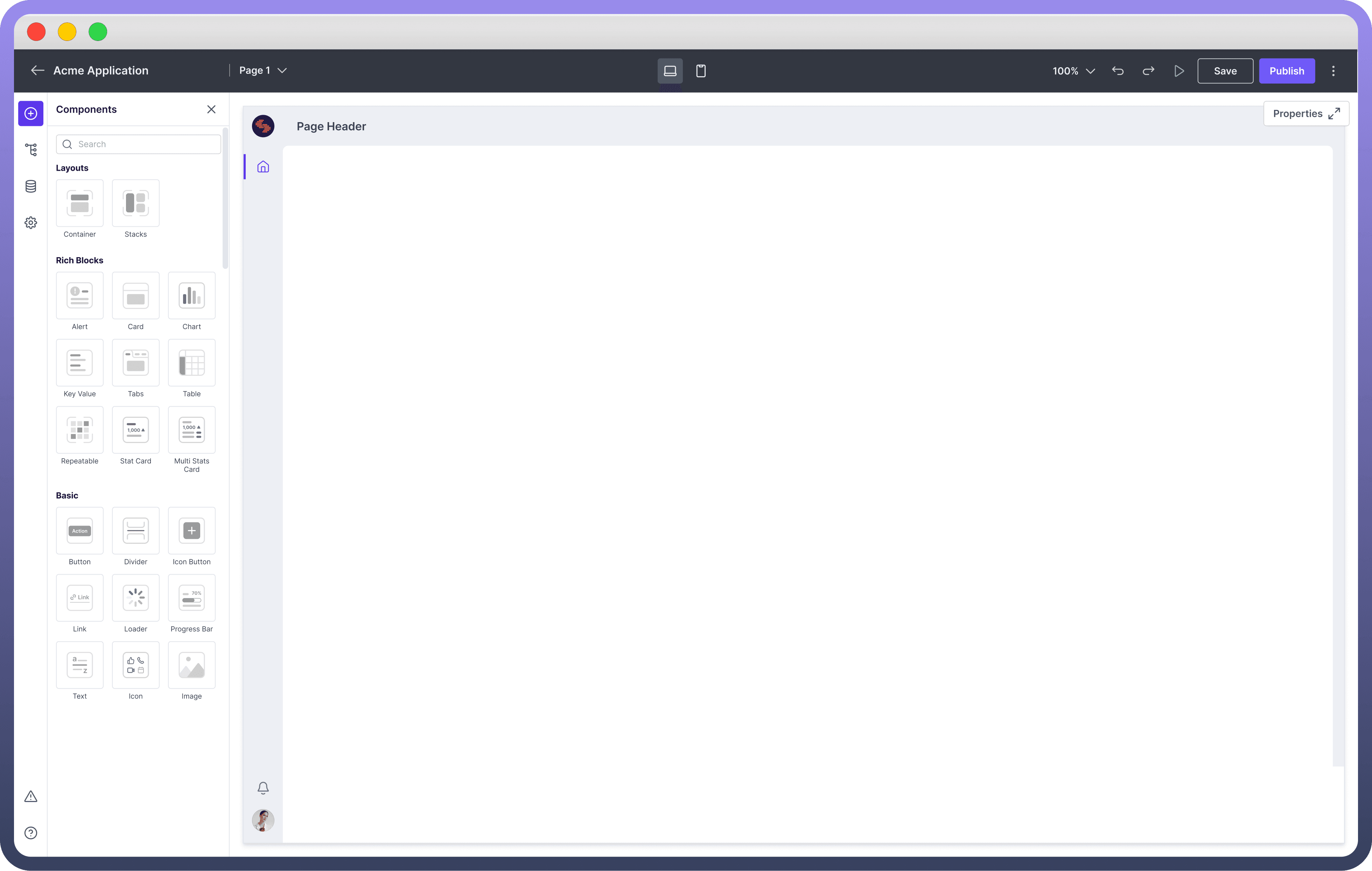
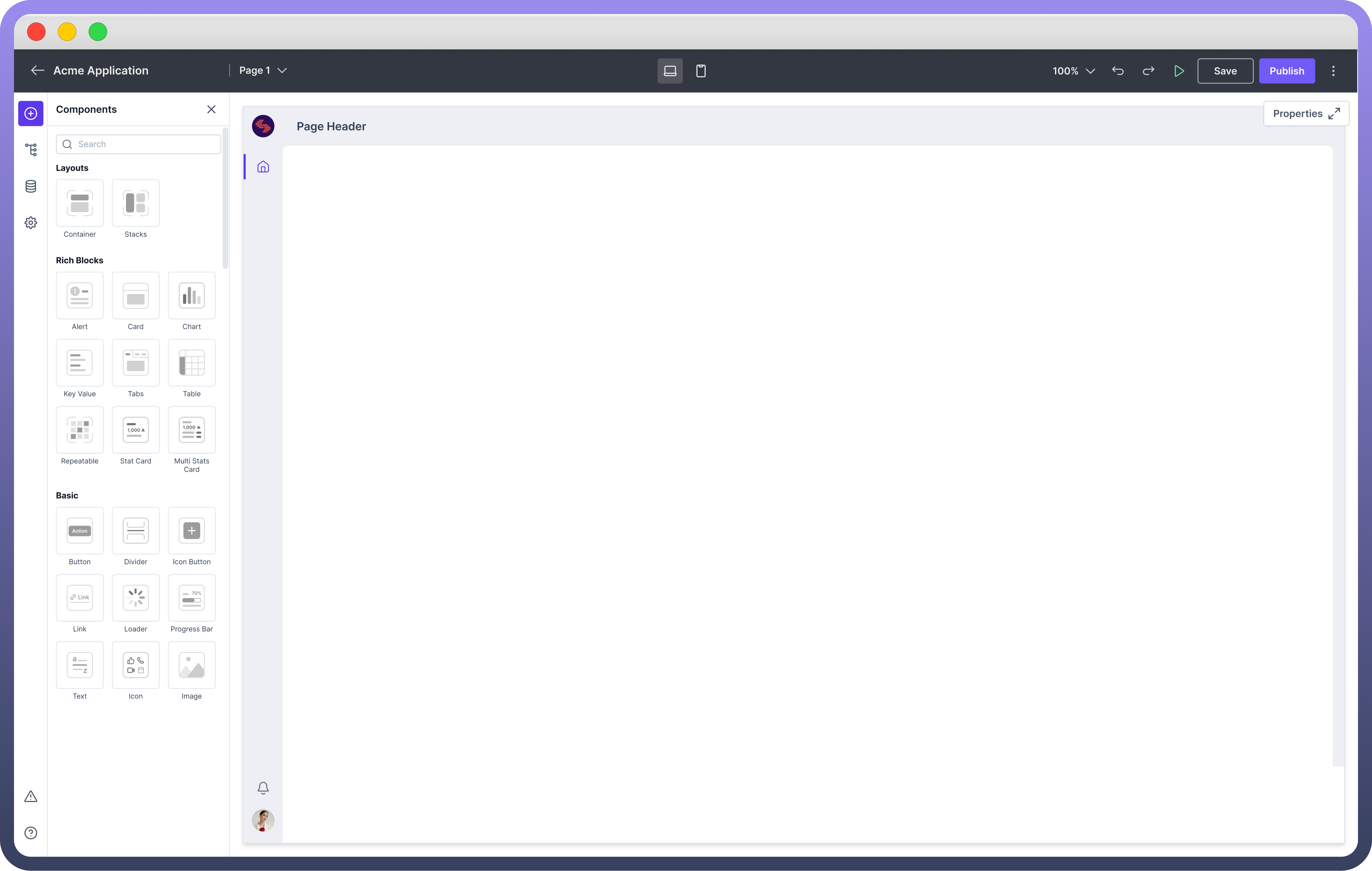
Each UI component comes with a property panel where users can define its content, interaction, and appearance.
Refer
You can add different types of components to make your application intuitive. Read more about Components here.
Canvas: The Canvas is the central workspace where users design and build their applications.
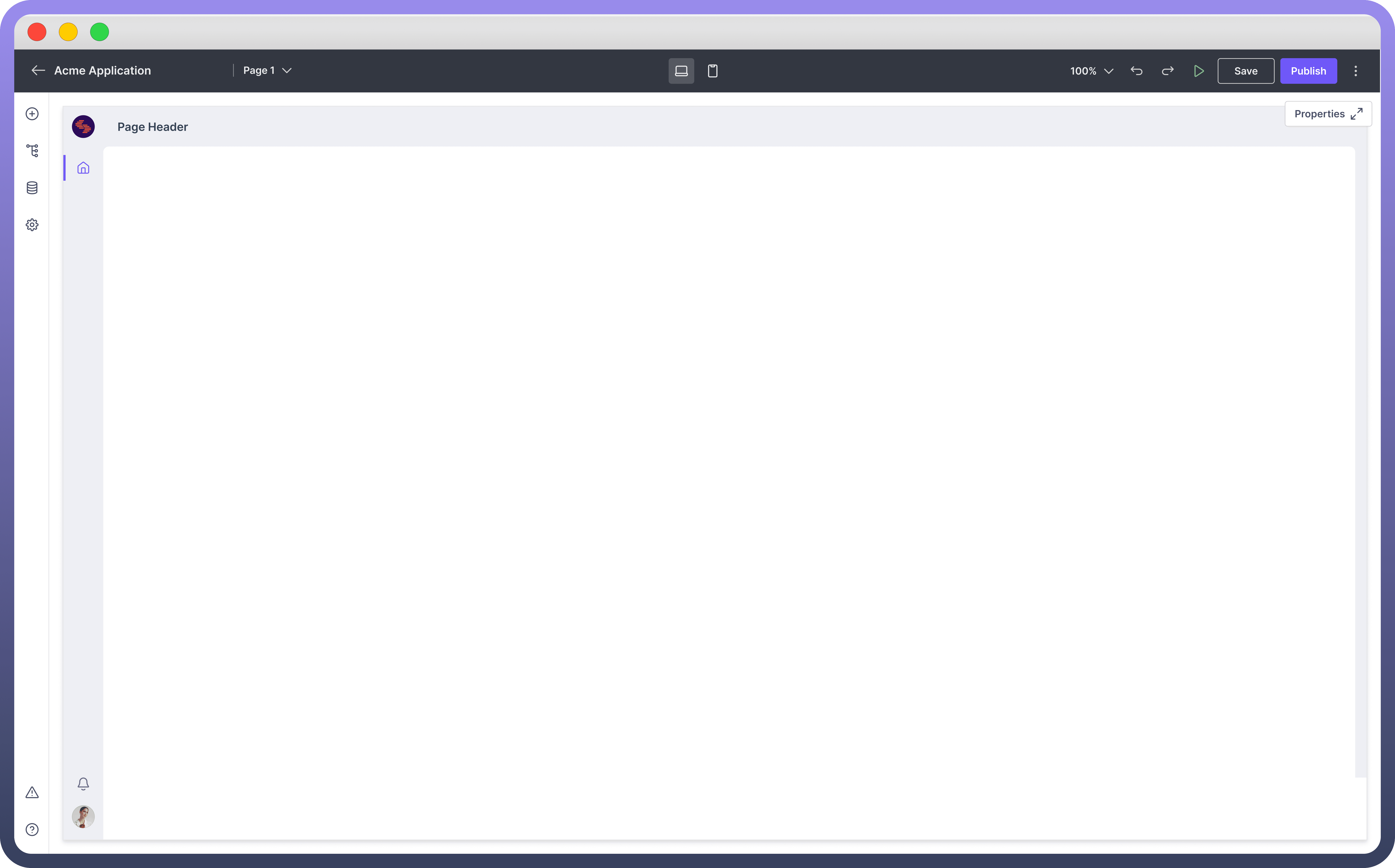
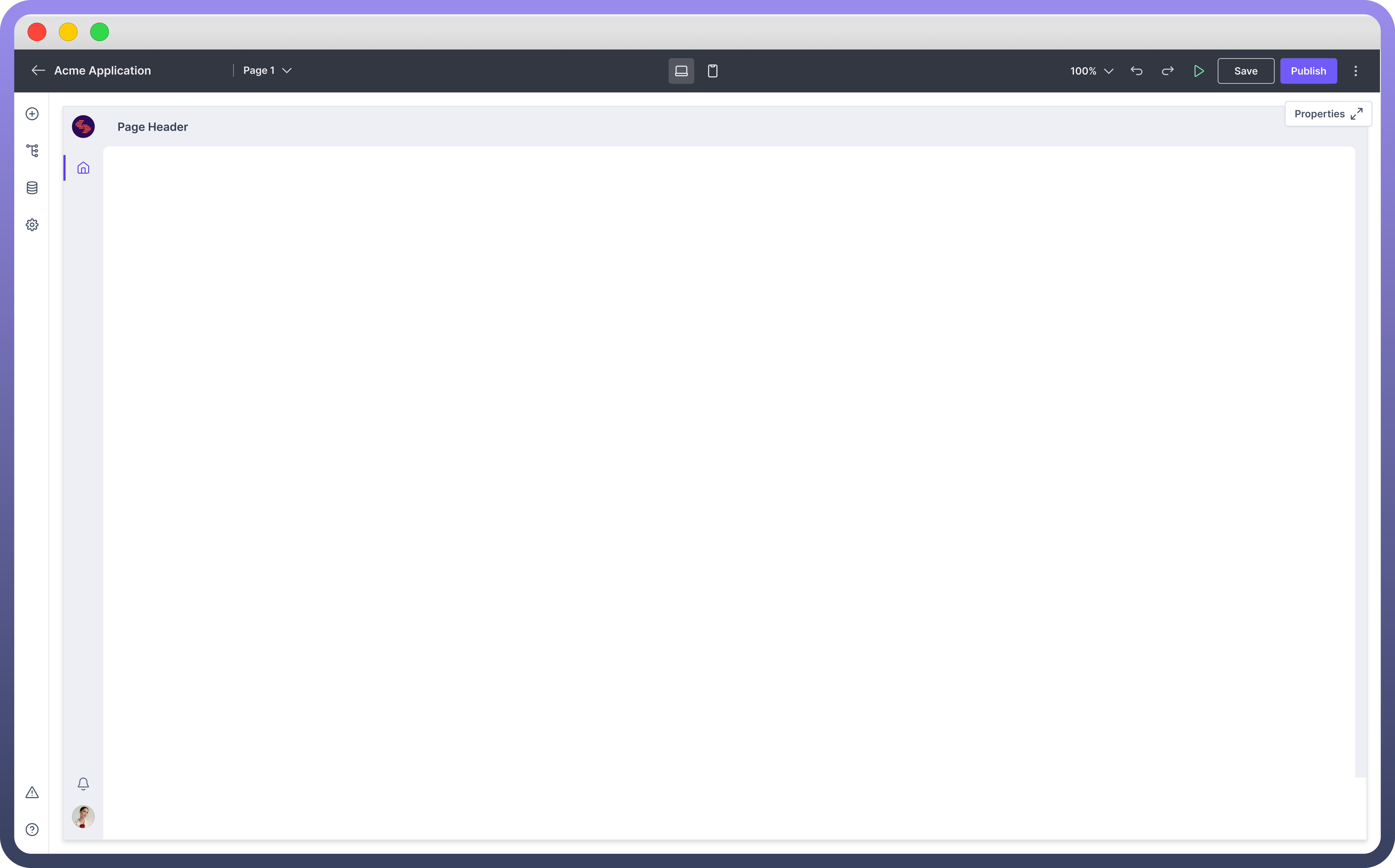
It provides a visual, drag-and-drop interface where UI components can be easily
placed,arranged, andcustomised.Data Sources: These are the essential components that fetch and manage data for the application.
They can retrieve information from external applications or from UnifyApps' internal database, providing flexibility in data integration.
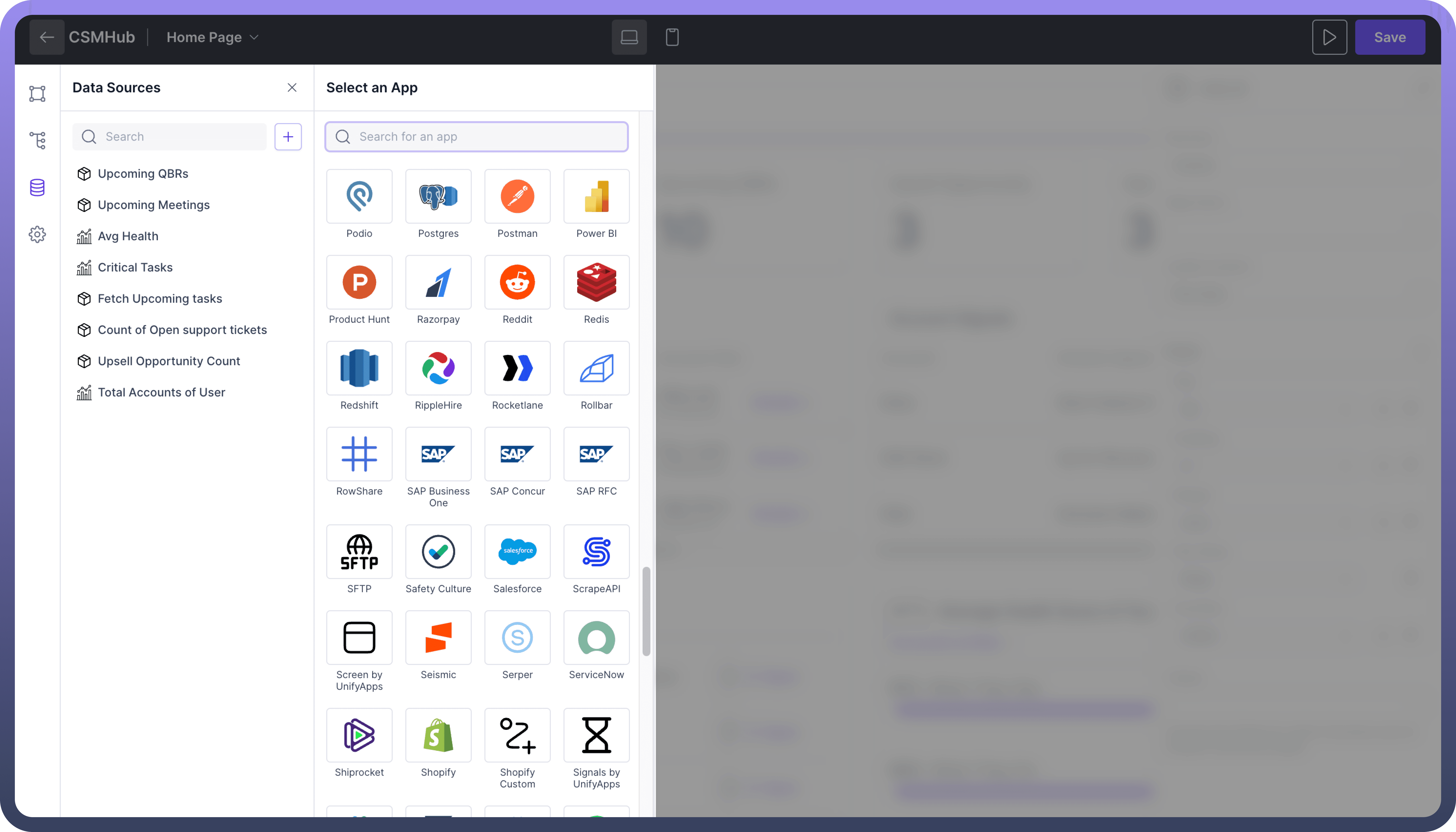
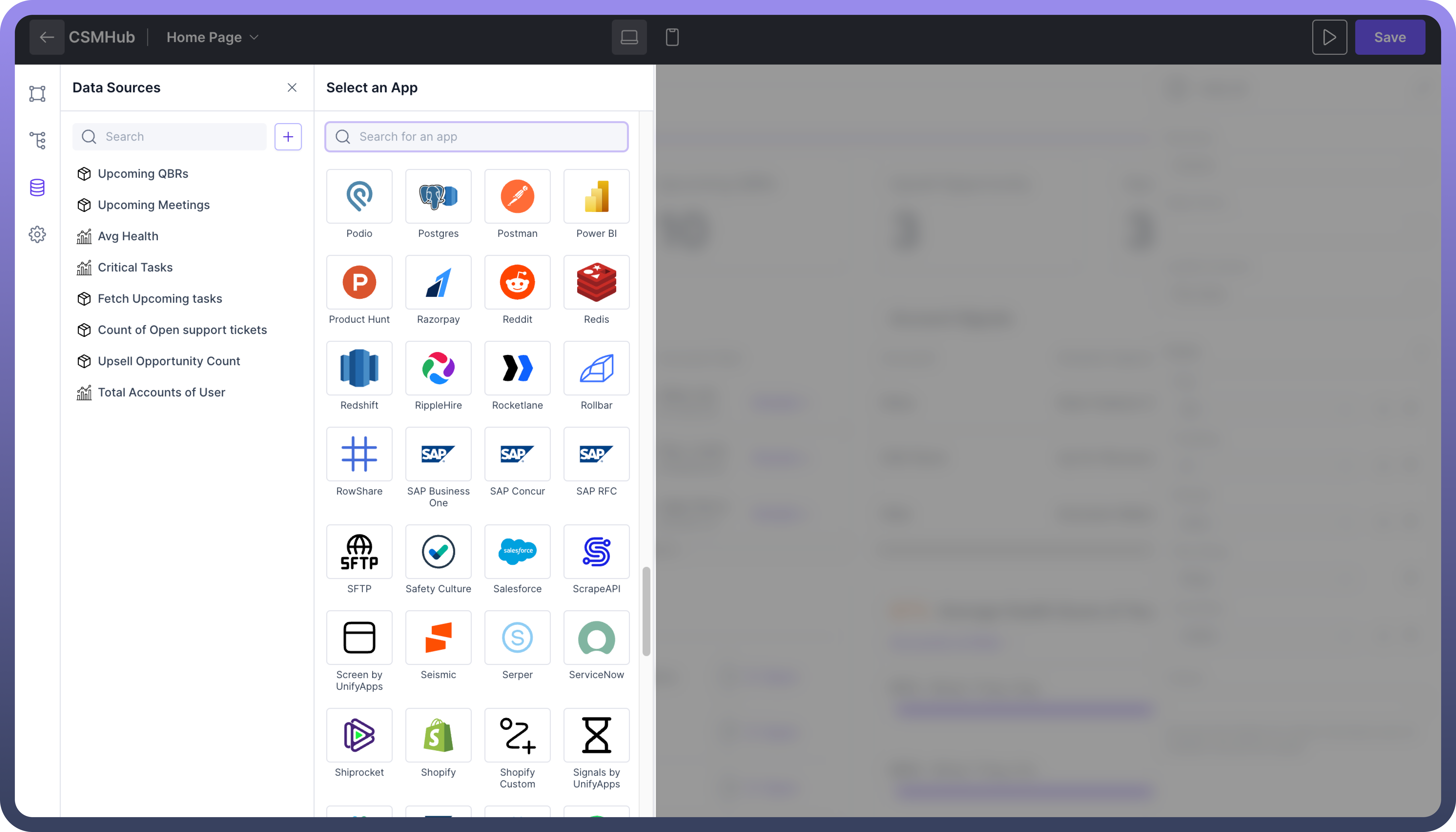

Refer
Data sources are essential for connecting and utilizing various external applications. You can read more about Data Sources here.
Best Practices
User-Centric Design: Focus on designing applications with the end-user in mind. Ensure the interface is
intuitiveanduser-friendly.Consistency: Maintain consistency in design elements such as
fonts,colours, andbuttonstyles across the application.Define Data Source and Schema: Plan and define your data sources and schema on paper before implementing them in the app.
API Keys and Credentials: Ensure you have the necessary developer access, API keys, or admin credentials before integrating data from external applications.
Naming Conventions: Use clear and meaningful names for data connections, UI components, pages to make it easier to manage and understand the data flow within the application.